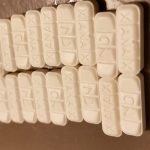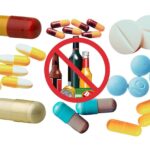What Are The Most Dangerous Medications?

A medication is a drug used to diagnose, cure, treat, or prevent disease. Drug therapy is an important part of the medical field and relies on the science of pharmacology for continual advancement and on pharmacy for appropriate management.
According to a report by the National Center for Biotechnology Information, for the U.S. National Library of Medicine, NSAIDs are known to hospitalize over 100,000 people each year. Overdoses, incorrect usage or dosing and accidental mixing with other drugs cause the deaths of over 16,000 people every year, in the US alone.
The substances on this list include only medications (OTC and prescription medicines) currently being used in medical practice around the world. Many of these drugs are generally considered to be safe when taken on their own and under the correct conditions. However, all drugs can be fatal when too much is taken or combined inappropriately with other substances. Keep yourself and your family safe by knowing which drugs to be careful with:
Acetaminophen. Common names for Acetaminophen include Tylenol, Mapap, and Feverall. This drug is regularly used for pain relief and is considered to be the most dangerous on this list due its potential to cause liver damage and toxicity. Acetaminophen is the nation’s leading cause of acute liver failure, according to data from an ongoing study funded by the National Institutes for Health. Analysis of national mortality files shows about 450 deaths occur each year from acetaminophen-associated overdoses; 100 of these are unintentional. Analysis of national databases also show that Acetaminophen-related overdoses account for about 50,000 emergency room visits and 25,000 hospitalizations yearly.
Benzodiazepines. Sometimes called “benzos,” are anti-anxiety medications that include Xanax, Valium, and Klonopin. Benzodiazepine drugs rank high on this list due to the high prescription rate and increased risk of deadly respiratory depression that occurs when taking the medications. The risk of experiencing negative side effects is significantly heightened when combined with other drugs, particularly barbiturates, opioids, and alcohol. According to the Centers for Disease Control and Prevention (CDC), benzos were involved in 31% of all overdose deaths during the year 2017.
Anticoagulants. Common anticoagulants include Warfarin, Xarelto, and Heparin. These medicines are used to prevent blood clots in patients that are deemed at-risk for clotting. Anticoagulants rank fourth on this list due to the serious health conditions that can result from use, such as strokes, transient ischemic attacks (TIAs), heart attacks, deep vein thrombosis (DVT), and pulmonary embolism. When combined with Aspirin and other blood-thinning drugs, anticoagulants can also cause fatal internal and/or external bleeding.
Antidepressants. Common antidepressants include Cymbalta, Wellbutrin, Prozac, and Zoloft. Antidepressant drugs are commonly used to treat major depression and mood disorders, but are also occasionally prescribed for attention deficient hyperactivity disorder (ADHD), obsessive compulsive disorder (OCD), and anxiety disorders. These drugs are high on this list due to the adverse health effects long-term use can have on consumers. Those taking antidepressants have a 33% higher risk of dying prematurely than people who are not taking the drugs. Additionally, antidepressant users are 14% more likely to have an adverse cardiovascular event, such as a stroke or heart attack.
Anti-Hypertensives. This class of drugs are used to treat hypertension (high blood pressure), They include medications such as Hytrin, Cardura, and Minipress. These drugs have been linked to cardiovascular issues, acute renal failure, prostate cancer, and new-onset diabetes in consumers – all of which can result in death. When combined with NSAIDs or diuretics, the possibility of experiencing these health risks is amplified and can lead to fatality.
Bromocriptine. Also known as Parlodel, is used to treat symptoms of Parkinson’s disease and hyperprolactinemia (high levels of a natural substance called prolactin in the body) including lack of menstrual periods, milky discharge from the nipples, infertility, and hypogonadism. Bromocriptine ranks seventh on this list due to the potential severe health side effects that can occur in patients, such as lethal circulatory collapse. Systematic hypotension has also been documented in about 33% of people taking the medication. Additionally, the drug has been associated with somnolence, and episodes of sudden sleep onset, which has resulted in dangerous encounters and motor vehicle accidents.
Clarithromycin. This antibiotic is used to treat certain bacterial infections such as pneumonia and bronchitis. The FDA is currently advising caution before prescribing Clarithromycin due the increased risk of fatal heart complications that can occur years later. In fact, consumers are at a 27% increased risk for cardiovascular death if they have taken Clarithromycin at some point in their lives. It is unclear why this medication causes such effects, but the risk of experiencing them is amplified when the drug is combined with calcium channel blockers, such as Lipitor.
Clozapine. This is an antipsychotic medication used to treat schizophrenia. It can also lower the risk of suicidal behavior in patients with schizophrenia or schizoaffective disorder. Clozapine breaks the top ten in this list due to the negative cardiovascular effects that can occur, including myocarditis and cardiomyopathy. The risk of experiencing these effects is significantly increased when combined with other central nervous system depressants, such as alcohol. Clozapine has also been documented as causing gastrointestinal hypomotility or “slow gut,” which can result in severe constipation, bowel obstruction, and even death.
Colchicine. This is a medication used to treat and prevent gout attacks, as well as some other inflammatory conditions. Colchicine is considered a high-risk medicine by the U.S. Food and Drug Administration (FDA) due to its ability to cause significant toxicity and death. The drug has a very narrow therapeutic index, which means that the range between therapeutic and toxic doses is small, and is some cases it can overlap. Fatal overdose has been documented as resulting from as little a dose as 0.5 mg/kg. The risk of overdose is significantly increased when colchicine is combined with strong CYP3A4 inhibitors – a mixture that usually results in death.
Cough Medicines. Common cough medicines include NyQuil, Robitussin, and Theraflu. These medications are used to relieve cough caused by the common cold, bronchitis, and other breathing illnesses. Cough medicines come in at number twelve on this list due to the high risk of abuse and multiple adverse effects that can occur in consumers. The main ingredient in cough medicines is dextromethorphan (DXM) which can create intoxication, hallucinations, and dissociation in large doses. Overdose can occur when too much is taken and result in severe sedation and fatal respiratory depression. Hypoxia has also been documented as occurring, which can have short- and long-term mental effects on the nervous system, including coma, permanent brain, damage and death. These medicines are often misused in combination with other drugs, such as alcohol and marijuana, which can additionally increase the risk of deadly overdose.
Digoxin. This medication is also known as Lanoxin, it is used to treat various heart conditions, including congestive heart failure and arterial fibrillation (AFib). Ironically, new research suggests that for people who have atrial fibrillation, taking the drug may increase the risk of dying by more than 20%. Digoxin has also been linked to nausea, vomiting, and severe gastrointestinal issues such as constipation and perianal infections. These negative side effects are more likely to occur when the medication is combined the anti-arrhythmic agent Quinidine, which can also result in overdose and death.
Semi-Synthetic Opioids. Common semi-synthetic opioids include Percocet, Vicodin, and OxyContin. These medications are generally used to treat moderate to severe pain, although some can be prescribed for coughing and diarrhea. These drugs are highly addictive and present a high risk of misuse. Semi-synthetic opioid misuse can cause slowed breathing, which often results in hypoxia, a condition that results when too little oxygen reaches the brain. Hypoxia can induce coma, permanent brain damage, and even death. Opioids are also often combined with other drugs to increase intoxication, including cocaine and alcohol, which significantly raises the risk of fatal overdose. America is currently undergoing an opioid epidemic due to the prevalence and high overdose rate of opioid drugs, making this the final most dangerous category of drug on the countdown.
Always Take Medications Responsibly
Each year, thousands of Americans lose their lives to pharmaceutical preparations. It’s important to remember that all drugs can be dangerous when not taken properly or in combination with other substances, including prescription medications.





